Grevillea's Growers Guide - The Popular Shrub and Groundcover for Australian Gardens
Video Guide – Grevillea
Gold Cluster™ | Masses of Gold Flowers
Crimson Villea™ | Darker Green Foliage
Cherry Cluster™ | Masses of Red Flowers
Height Guide – Grevillea
CHERRY CLUSTER™ – Grows up to .5 metres
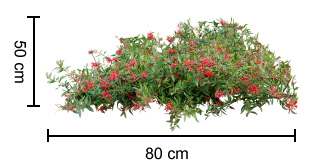
CRIMSON VILLEA™ – Grows up to .8 metres
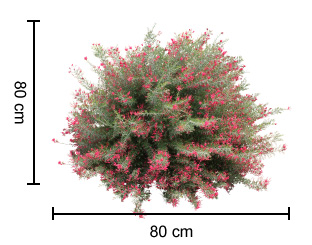
GOLD CLUSTER™ – Grows up to .3 metres

Grevillea
The grevillea has to be one of the all-time most popular spreading shrubs in Australian gardens.
Grevilleas’ exuberant flower displays and the wide range of shapes and sizes (from prostrate plants and small shrubs to large trees) make them the perfect plant for almost any garden setting.
The spectacular grevillea flower clusters generally take one of three forms: toothbrush (with all the racemes on one side), spider (racemes spread out like spider’s legs), or brush (more even arrangement).
Flower colours feature a wide variety of red, orange or yellow shadings and some grevillea plants will flower all year round.
The grevillea’s evergreen foliage likewise displays a wonderful variety ranging from needle shaped and saw-toothed to fern like.
Many grevilleas also provide additional pleasure for gardeners because the prolific flowers attract honey-eating birds to carry out pollination.
The grevillea is classed as a member of the Protea family (Proteaceae).
There are some 340 species in the grevillea genus most of which are endemic to Australia. Grevilleas take their name from the renowned botanist and founder of the Royal Horticultural Society, Charles Greville (1749-1809).
Grevilleas are closely related to Banksia and being native to Australia they are generally pretty hardy.
The Grevillea, as a Ground Cover
Grevilleas are renowned for their rapid dense growth and this makes them ideal as ground cover plants capable of competing against the toughest weeds.
Some grevillea ground cover plants grow in a low prostrate form or there are also weeping forms where the branches hang down and spread out to form a lush carpet.
In the right conditions some ground cover grevilleas can spread 3 or 4 or more metres. Grevillea plants make a perfect choice for planting on top of retaining walls or on steep banks.
Some of the spectacular ground cover grevilleas include:
- Gold Cluster™ Grevillea juniperina ‘H22’

Gold Cluster™ forms a particularly dense low growing mat perfect for crowding out weeds.
The large numbers of electric yellow-gold spider-like flowers will give enormous pleasure.
It tolerates drought and cold, full sun and part shade and grows particularly well in southern regions of Australia.
Gold Cluster™ Grevillea grows 30cm high x 80cm-1m wide.
- Crimson Villea™ Grevillea rosmarinifolia ‘H16’

Crimson Villea™ has to be one of the most spectacular winter flowering plants in the world.
It grows to a tight compact form up to 80cm x 80 cm and produces an abundance of vibrant crimson flowers from autumn through to spring.
Crimson Villea™ is pretty tough and tolerates frosts and dry conditions. NSW, ACT, Victoria, Tasmania, South Australia, WA & parts of South East QLD.
- Cherry Cluster™ Grevillea rhyolitica x juniperina ‘TWD01’

Cherry Cluster™ is a semi-prostrate spreading shrub growing to 50 high x 80 cm wide.
Stunning cherry coloured flowers will provide a spectacular display from autumn to early spring.
Cherry Cluster™ is a great choice for mass plantings and rock gardens in southern NSW, ACT, Victoria, Tasmania, Adelaide, Perth, and is especially suited to the Sydney area.
- FlatAz™ Grevillea hybrid ‘GR01’
 Intended
Intended
FlatAz™, the name says it all, a great drought resistant ground cover grevillea that showcases surreal looking long red flowers with yellow highlights.
Dramatic green spikey foliage provides a real contrast.
FlatAz™ thrives pretty much anywhere in Australia.
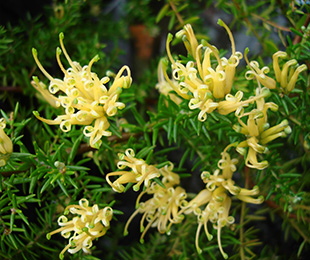
GOLD CLUSTER™
Grevillea juniperina ‘H22’ ![]()
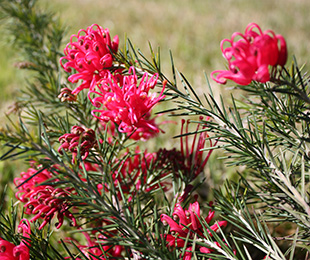
CRIMSON VILLEA™
Grevillea rosmarinifolia ‘H16’ ![]()

CHERRY CLUSTER™
Grevillea rhyolitica x juniperina ‘TWD01’ ![]()
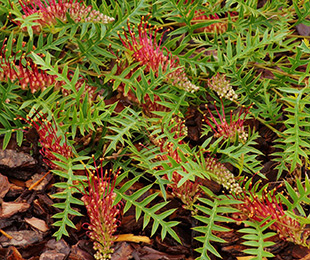
FLAT AZ™
Grevillea hybrid ‘GR01’ ![]() Intended
Intended
Which Grevillea Plant Is Best For My Needs?
With so many grevilleas to choose from you can find one to suit every garden in Australia. Ozbreed believes in choosing the ‘right plant, right place’.
Although they are hardy you need to choose a grevillea that suits your local climate and soil conditions.
For example, a grevillea from Western Australia is not going to do as well in the high humidity of the NSW coastline.
Fortunately, the readiness of grevilleas to hybridise allows breeders to produce cultivars with hardy genetic material to suit any climate.
The Cherry Cluster™ Grevillea gains its drought and frost resistance hardiness from Grevillea rhyolitica, but owes its superior groundcover form to Grevillea juniperina.
What Makes My Grevillea Really Happy?
Grevilleas are generally a fairly hardy plant.
Their native Australian genes mean they are generally drought and cold/frost tolerant. For the most part they like full sun or partial shade and they prefer well-drained soils.
Avoid soils with a pH of more than 7; grevilleas prefer to get their roots down into more acidic soils.
In less well-drained soil creating a raised planting area will aid drainage and help keep your grevillea happy.
Grevilleas don’t need much fertiliser –perhaps a small helping of native plant fertiliser or blood and bone in the early spring.
But do make sure you avoid fertilisers containing phosphorous, as this will cause discolouration of the leaves. Resist the temptation to feed fresh manure around grevilleas; this can burn the roots.
During the flowering season cut back spent flowers to encourage more prolific flowering.
Pruning will nearly always help your grevillea to develop dense foliage and a generous flower display. A general rule of thumb would be to prune your grevillea back by a third after the main flowering season is over.
If your grevillea groundcover is getting really straggly you can tidy it up with a good hard prune but some grevillea varieties won’t survive if you cut right back into the old wood and completely remove all the new growth.
It is a good idea to stake taller grevilleas for their first year so that they can form a really strong root system.
What Problems Should I Look Out For?
Grevillea are very hardy and are not susceptible to many diseases or pests.
However, poor drainage or overwatering can lead to root rot. If your grevillea does come under threat from any of the common pests the plant’s natural resistance will usually be enough to overcome the problem.
Grevilleas hybridise very readily so propagation by seed is not usually recommended if you wish to produce plants that are true to type.
Some gardeners avoid the problem of uncertain new plants arising by bagging the seed heads or simply removing spent flower heads.
Do Grevilleas Cause Allergic Reactions?
Yes, the foliage of some grevilleas can trigger dermatitis reactions in sensitive people.
The Robyn Gordon cultivars are particularly common culprits in dermatitis reactions. The suspected allergen, resorcinol, found in grevillea plants is very similar to the chemical found in poison ivy and poison oak.
Think carefully about where you plant a grevillea and avoid places where people will frequently brush past the leaves.
For this reason it’s also important to wear gloves when working with your grevilleas.
